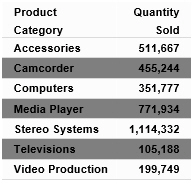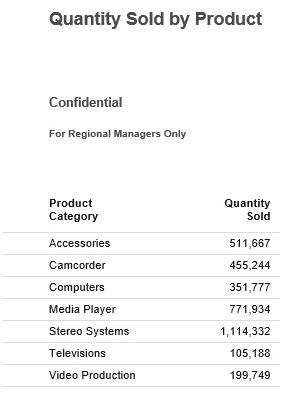Procedure: How to Add Headings and Footings to a Report
You can make a report more meaningful by adding headings and footings. Headings and footings supply context and key information about a report, such as its purpose and audience. Headings and footings also provide structure, helping you navigate to the detail sought. They enhance visual appeal.
In this procedure, you will add and style a report heading and page heading. The procedure uses sample values, but you can supply values that apply to your own reports.
Headings and Footings are available in Query Design view, Live Preview, and Document mode.
- Create a report.
- On the Home tab,
in the Report group, click the Header & Footer button.
The Header & Footer dialog box opens.
- Click
the tab for the heading or footing element that you want to add.
For a report, you can add a report heading, page heading, page footing, or report footing. By default, the Report Header tab is selected. In this procedure, accept the default.
- Click
inside the design area of the dialog box, and type the text for
the heading.
For example, the text for a sample report heading might be Quantity Sold by Product.
- Using
the styling ribbon, apply styling to the report heading text.
For example, click HELVETICA from the Font drop-down list. From the Font size drop-down list, click 12.
The sample report heading with the selected styling values is shown in the following image.
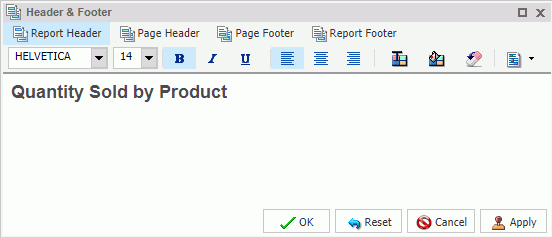
- Click Apply to save the changes you have made so far, without closing the dialog box.
- To add
a page heading, click the Page Header tab.
In this procedure, you are going to add one of the supplied quick text options.
- Click
the last icon
 (Insert
preformatted text content for headers/footers) on the
right of the styling ribbon, and click Confidential in
the list.
(Insert
preformatted text content for headers/footers) on the
right of the styling ribbon, and click Confidential in
the list. - Change
the font and font size. For example, change the font to HELVETICA and
the size to 10.
You can add your own text before or after the supplied text, for example, For Regional Managers Only.
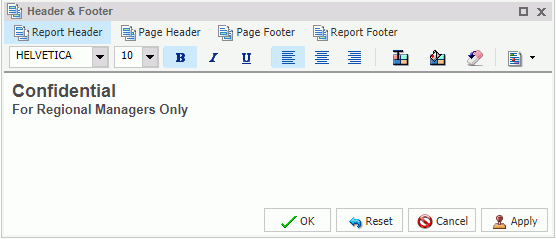
- Click OK to
save the report heading and page heading and close the Header &
Footer dialog box.
The report heading and page heading that you added and styled are shown in Live Preview in the following image.
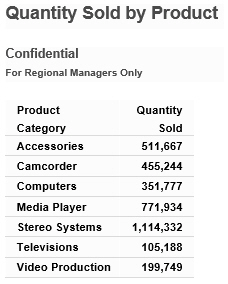
- To make changes to either the report or page heading, right-click the heading and click Edit. You can also double-click on the header to open the Header & Footer dialog box.
